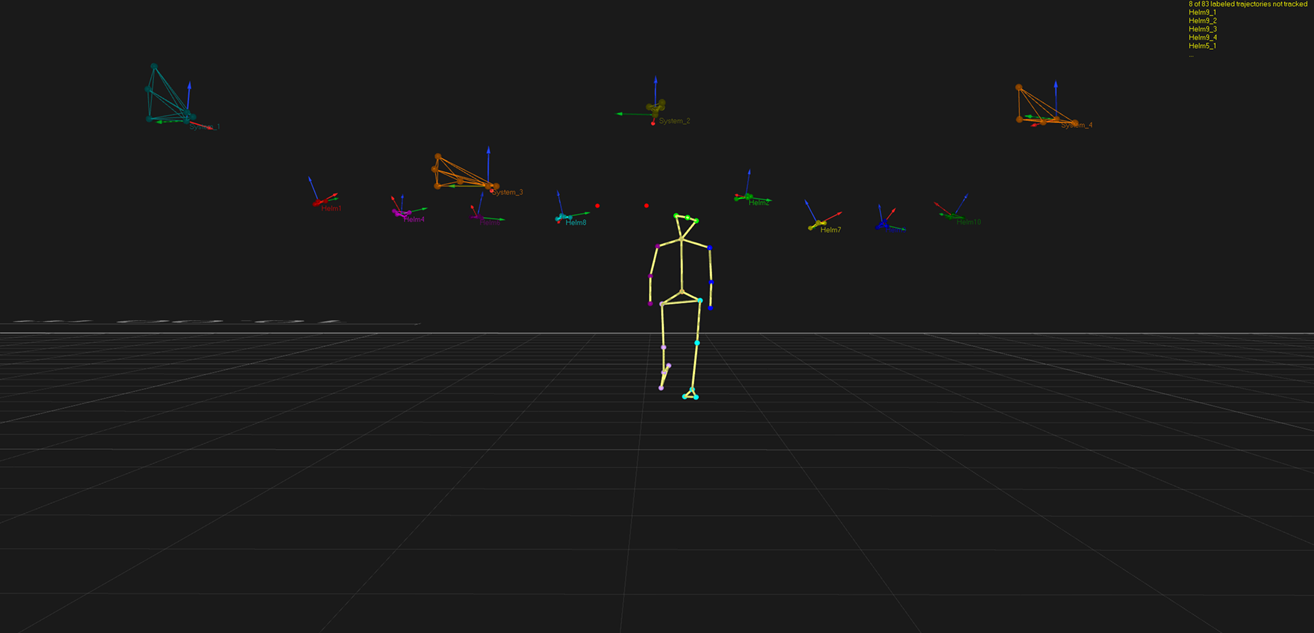Perceiving traffic hazards and responding in good time can be a matter of life and death both for drivers and for other road users. Yet, identifying all road users is a difficult task – particularly at intersections with poor visibility. The HORIS radar system is designed to tackle precisely this problem.
Realistic movement data in the L.I.N.K. Hall
The necessary motion capture measurements were carried out at the Test and Application Center L.I.N.K. of Fraunhofer IIS in Nuremberg. For this, researchers selected a street featuring two bus stops some distance apart, as well as people and vehicles, and tested various scenarios under realistic conditions. The merging of data from several radar sensors enables early detection of movement if one or more persons spontaneously cross the road. Other scenarios look at what happens if someone crosses the road behind a stopping bus or if several people are waiting at the simulated bus stop and one of them suddenly breaks away from the group and crosses.
Use case
Initially, the plan is to use radar sensors at critical points in the infrastructure, such as bus or tram stops, where they will record the movements of individual road users. This data will then be transmitted to moving traffic in the form of a hazard map so that drivers can perform emergency stops or other maneuvers in good time if necessary.
HORIS is a joint project of Fraunhofer IIS, Fraunhofer FHR, and Fraunhofer IVI.
